Very clever, one might think: Despite the US chip sanctions prohibiting Western companies from supplying China with cutting-edge semiconductors, the leading US company for AI chips is still earning handsomely in China. The reason: Nvidia has simply created a scaled-down version of its AI chips for the Chinese market that are not subject to US sanctions. And these chips that Nvidia is offering the Chinese still seem good enough: China’s AI industry remains competitive for the time being.
But you can also see things through a different lens. Joern Petring writes in his analysis that as long as Nvidia apparently covers the required demand, Huawei and other Chinese chip companies will find it difficult to catch up technologically.
Donald Trump’s increasingly likely US presidency is apparently causing very little concern in China. A veritable fan cult had already formed in the country before the assassination attempt on Trump, despite his open intention to impose even stricter tariffs on Chinese goods. In his piece, Fabian Peltsch describes the love-hate relationship that many in China apparently also have with the erratic populist. Strange new world!
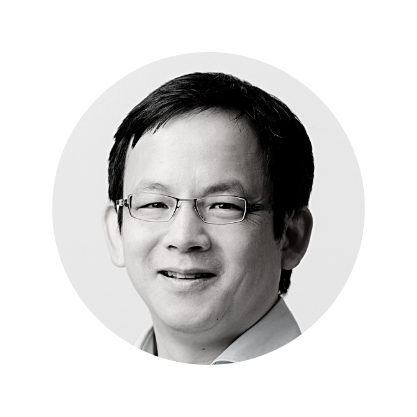
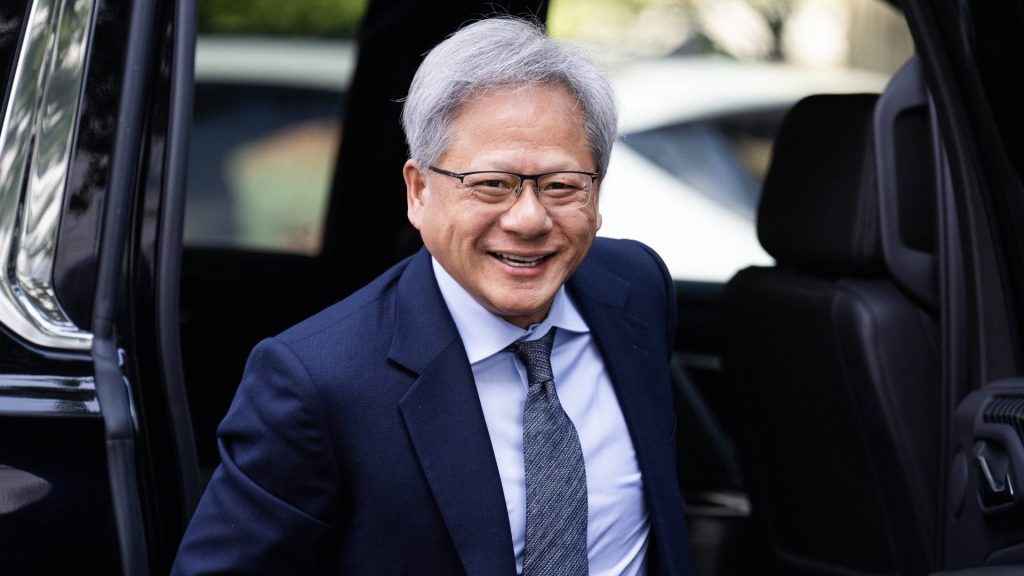
Despite strict restrictions from Washington, US chip manufacturer Nvidia can also expect billions in sales in China this year. The Financial Times reports, citing analyst estimates, that the company is likely to earn around twelve billion US dollars in China with its H20 AI chip alone, which was specially developed for the Chinese market.
According to the report, the world’s most valuable chip company is expected to deliver around one million H20 chips to Chinese customers in the coming months. That would be almost twice as many as Nvidia’s largest Chinese competitor Huawei managed to sell with its most advanced AI chip, the Ascend 910B.
The forecast shows how difficult it still is for Chinese companies to catch up with industry leader Nvidia when it comes to AI chips. After all, the H20 is by no means the American company’s top model, but a significantly scaled-down AI chip. Nvidia developed it specifically so that it would not violate the sanctions imposed by the White House and could be sold in China. Despite the restrictions, the H20 is now selling like hotcakes there.
Since the Biden administration first introduced restrictions on the sale of Nvidia’s most powerful AI chips to China in 2022, the US company has warned that its business will suffer. Chinese cloud computing providers and AI start-ups are indeed increasingly turning to local alternatives such as Huawei. However, they do not yet seem to be able to meet domestic demand.
According to its own figures, Nvidia generated around a quarter of its turnover in China in 2021, before the US introduced export controls. This year, it will be closer to ten percent. However, the shift is also because Nvidia experienced disproportionately strong growth in the West last year.
Growth was primarily driven by large orders from US tech companies such as Microsoft, Meta and Tesla. Although the share of the China business of the company’s sales pie has fallen significantly. In absolute figures, however, business in China continues to grow strongly. Turnover in the first quarter increased by 50 percent to 2.5 billion US dollars compared to the first quarter of the previous year. Among other things, Nvidia is expanding with EV market leader BYD, including in AI.
According to analysts, the H20 chip initially raised eyebrows among Chinese buyers, mainly due to its comparatively high price of 12,000 to 13,000 US dollars per unit. Ultimately, however, the performance convinced buyers. On paper, the capabilities of the H20 are lower than those of Huawei’s most powerful chip, the 910B. But in practice, the H20 is superior.
In addition, Huawei and its manufacturing partners reportedly have problems producing the complex processors in sufficient quantities to meet demand. Most Chinese AI companies have also built their AI models and systems on Nvidia’s ecosystem and software. Analysts say switching to Huawei’s infrastructure would be time-consuming and costly.
To summarize, the market situation looks like this: Although Nvidia only offers very slimmed-down AI chips in China, they still seem to be good enough to remain competitive for now. Huawei and other chip companies still need more time to catch up. However, they undoubtedly are working hard to catch up.
Since Nvidia cannot offer its best chips in China, it is forced to fight the local competition with one hand tied behind its back. Nvidia CEO Jensen Huang is aware of this dilemma. He has already expressed concerns about the US chip sanctions on several occasions. He expects that these restrictions could have unintended consequences. China may accelerate its efforts to develop its own semiconductor industry. This could ultimately lead to increased competition for US companies. Huang believes the sanctions may make the Chinese technology sector more self-reliant and competitive.
Other Western chip bosses also share these concerns. The head of the Dutch chip manufacturer ASML has only recently called for an end to the sanctions against China. In an interview with the German business newspaper Handelsblatt, Christophe Fouquet said that China produces chips urgently needed in the West. “There is no point in stopping someone from producing something you need.” In the case of Russian gas, it was understood that alternatives had to be found first, but this was apparently not the case with chips, he said. ASML is a leading provider of the technology used to produce the world’s most advanced semiconductors.

The assassination attempt on Donald Trump dwarfed a food scandal as the topic of the hour over the weekend. Hashtags such as “Trump has been shot #特朗普遭遇枪击,” or “Trump explains bullet in right ear #特朗普称右耳被子弹击穿” quickly reached millions of clicks. Just a few hours after the incident, Chinese e-commerce platforms such as Taobao were selling T-shirts featuring the fist-raising ex-president. On the one hand, this speaks for the business acumen of Chinese online retailers. On the other hand, it is a sign of how much Trump is also stylized as an icon in China – for better or for worse.
Trump polarizes. And he inspires the Chinese to become political like no other. After the attack, people on Weibo quickly began to discuss what effect the images would have on the US elections, which are also crucial for China. They compared the incidents with the assassinations of John F. Kennedy and Shinzo Abe. Would Joe Biden have ducked away just as quickly? Another topic was the lax US gun laws, which also causes disbelief in China. Some even saw a civil war brewing in the USA.
US conspiracy theories were also discussed. For example, the New York Post initially reported that the shooter was a “Chinese man.” An attempt to instrumentalize the event? Overall, it was once again evident how open, informed and enthusiastic discussions about politics are in China when it is not about the country’s own leaders.
Many Chinese have come to see Trump as a symbol of what is wrong with the “Western democratic system” and the chaos that can result – a narrative often echoed by the state media. A popular example of this is the storming of the Capitol in January 2021 provoked by Trump, which the People’s Daily subsequently featured in a detailed article on the “crisis of capitalist societies.” They claimed that, unlike China’s socialist system, the USA is in decline and Trump was one of many symptoms of this; the gravedigger of an empire that is already in its final stages.
In the same breath, Trump is also called China’s helper. His nickname in China is “Comrade Jianguo 建国同志” or Chuān Jiànguó, 川建国, which means “State Builder Trump.” In this context, however, this does not mean that Trump is making America great again with his political style, but that he is primarily helping to consolidate China’s status as a world power. Perhaps because they themselves are used to propaganda of the simple variety, many Chinese have instinctively understood that Trump is all about headlines and show. Moreover, his threats to China during his time in office were not as devastating and stringent as he had proclaimed to his own voters at home.
Trump’s posturing as a strongman with vast wealth has also resonated quite positively in China. His pithy disdain for political correctness and the so-called “baizuo,” as the “Western-woke left” is disparagingly referred to in China, is celebrated by many. And his nationalist rhetoric – despite being primarily aimed at China – is also met with approval. It is similar to that of Xi and other authoritarian leaders. While China’s head of state has dedicated himself to rejuvenating the Chinese nation, Trump wants to restore the USA to its former glory.
It is the politics of grand gestures, something the Chinese, calibrated by the party, are traditionally more receptive to than slogans of freedom, equality and participation. Trump’s pathos may even remind some Chinese of Mao, who cultivated a similarly erratic strongman style and staged himself as equally infallible.
Perhaps the secret admiration for Trump and his promise to “Make America Great Again” also resonates with an old longing for the land of opportunity. Many Chinese, especially those born since the beginning of the opening-up policy in the 1980s, have seen the USA as their never-ending emigration destination for many years. However, for younger Chinese, the millennials and Gen Z, Trump is also simply a meme character – both belittled and revered, as is often the case with memes. In the tributes to the late head of state Jiang Zemin, a similar semi-ironic cult of personality could be observed among millennials.
There have been plenty of Trump T-shirts on China’s e-commerce sites even before the assassination attempt. Popular designs show his likeness in combination with pithy slogans such as “We are taking America back.” The attempt on Trump’s life has now fuelled this even more. Just a few hours later, the meme engine was running hot in China. One collage, for example, showed Trump as a communist hero, his fist raised to the sickle flag with the caption: 全世界无产者联合起来! – Workers of the world unite!
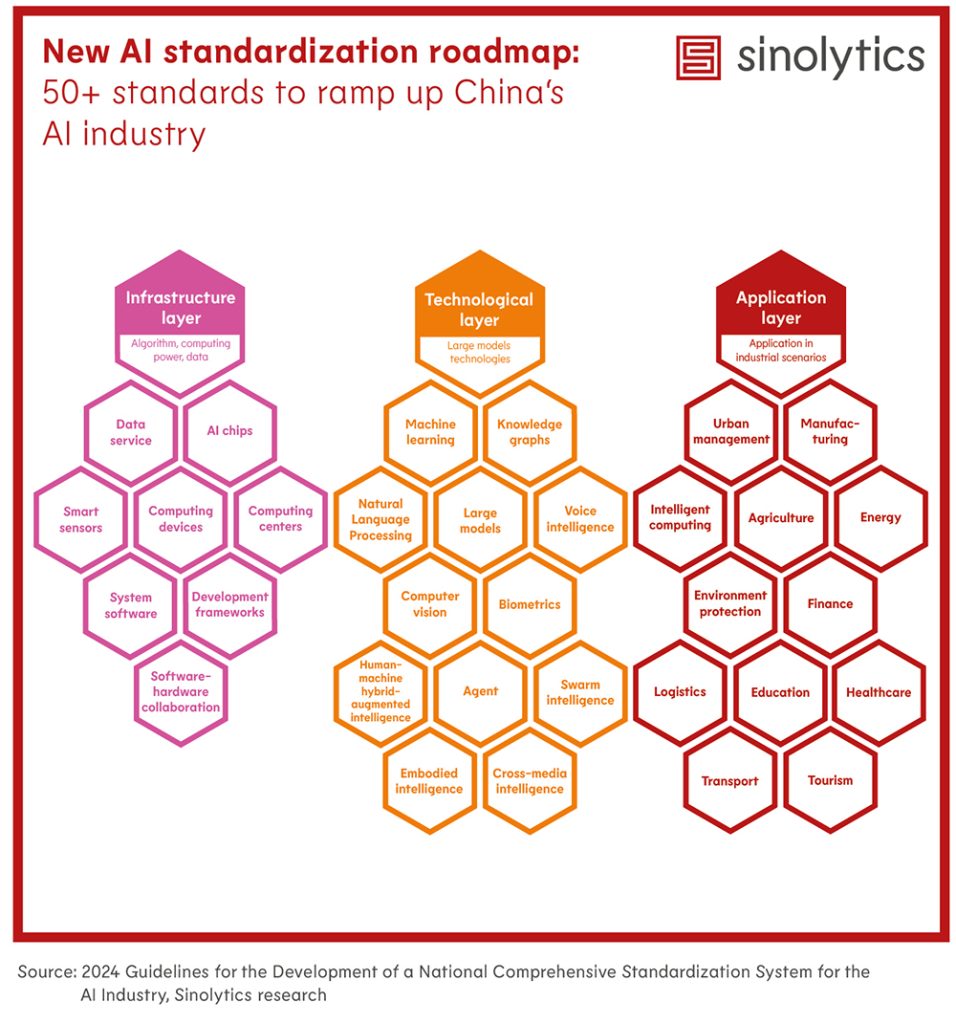
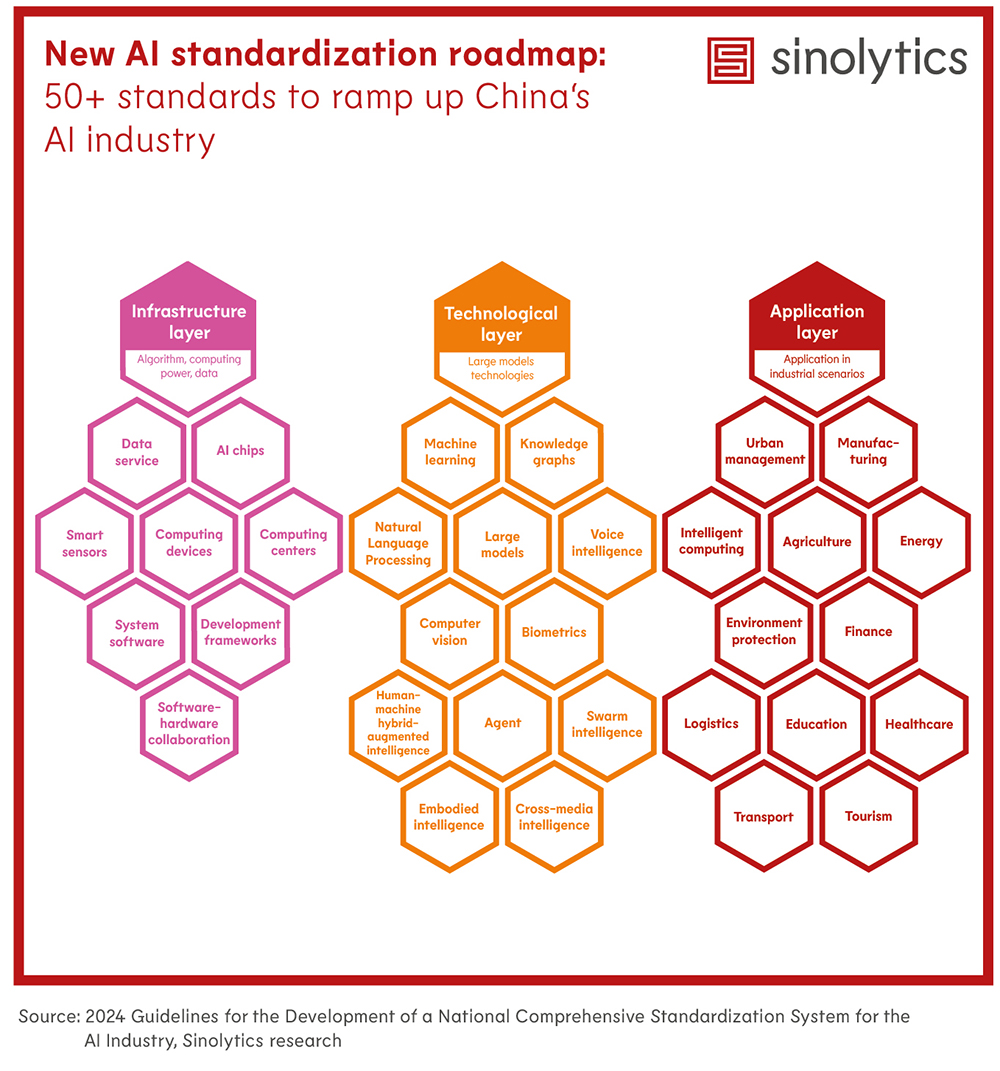
Sinolytics is a research-based business consultancy entirely focused on China. It advises European companies on their strategic orientation and specific business activities in the People’s Republic.
China’s state-owned rare earth companies are increasingly in the negative as prices fall. As the Japanese newspaper Nikkei Asia reported on Tuesday, the Shanghai-listed rare earth company “Rising Nonferrous Metals” from Guangzhou had to admit that it expected a net loss of between 271 million yuan and 311 million yuan (37.33 million to 42.84 million US dollars) in the first half of the year. The group cited a “drastic drop in the sales prices of its most important rare earth products,” namely dysprosium, terbium and didymium, a mixture of neodymium and praseodymium, as the reason. In the same period last year, the company made a net profit of 102 million yuan.
China Northern Rare Earth (Group) High-Tech, the country’s largest rare earth group by volume, barely turned a profit in the first half of the year: According to Nikkei, the company’s net profit is expected to range between a modest 37 and 54 million yuan, a 95 to 97 percent year-on-year decline. The mining company Xiamen Tungsten, which belongs to the Fujian provincial government, also announced that its revenue from the rare earths business fell by 22 percent in the first half of the year.
Nikkei reports that the government is currently strengthening its access to resources and the rare earth supply chain as a strategic industry. China holds the world’s largest reserves of the 17 rare earth elements, which are essential for a wide range of technical products – from smartphones to electric vehicles and wind turbines to missile defense systems. ck
Huawei appears to be on the verge of completing a chip R&D center in Shanghai. Citing the website of the Shanghai district of Qingpu in the west of the city, Bloomberg reported on Tuesday that it will be the company’s largest research center in the world with around 30,000 employees. The site in Qingpu is 1.6 million square meters in size and already has its own road network, a small railroad network and elevated bridges. According to the website, the total investment costs amount to ten billion yuan (1.4 billion US dollars).
In the face of US tech sanctions, China has stepped up its own development efforts to avoid falling behind. According to Bloomberg, the new plant is part of these efforts and is intended to generate breakthroughs in semiconductors for devices, wireless networks and the Internet of Things. Huawei has been the target of US sanctions and export controls for years. ck
The sharp downturn in the important Chinese market slowed down the luxury products company Richemont in the spring quarter. Sales of the manufacturer of Cartier rings and chains, as well as IWC and A. Lange & Soehne watches, rose by one percent in local currencies to 5.27 billion euros, as Richemont announced on Tuesday. The slowdown that had already become apparent last year thus continued. In Greater China, sales fell by 27 percent from April to June. China’s economy has been struggling with declining momentum for some time due to the ongoing downturn in the real estate market and the uncertain situation in the job market.
However, the Geneva-based company fared better than other industry players thanks to a resilient jewelry business. With Cartier, Van Cleef & Arpels and Buccellati, Richemont is the global market leader in branded jewelry. Thanks to its focus on the top segment with the most price-insensitive customers, Richemont is better positioned to withstand economic headwinds than many of its competitors, explained Reto Loetscher, analyst at Luzerner Kantonalbank. His colleague Patrik Schwendimann from Zurich Cantonal Bank pointed out that branded jewelry is gaining market share thanks to the younger generation. While Richemont’s jewelry business grew by four percent in the quarter, sales of watches shrank by 13 percent.
Earlier this week, the world’s largest luxury watch manufacturer Swatch reported a 10.7 percent drop in sales for the first half of the year. Fashion companies are also feeling the effects of the consumer slump in China. The men’s and women’s outfitter Hugo Boss posted a profit decline in the second quarter and canceled its annual targets. rtr
China continues to experience heavy rainfall. The deadly rains that devastated the south moved north and hit the previously drought-stricken central province of Henan and the northern province of Hubei. On Sunday, four people were killed in the city of Suizhou in Hubei when their car was washed into a river by the floods. Large parts of the grain province of Henan, which had been hit by a drought between April and June, were flooded by an “extremely heavy downpour” on Tuesday, the South China Morning Post reported. Beijing has put 15 provinces on high alert. The risk of severe flooding is increasing.
The country is entering the peak annual rainfall season. The authorities had recently put the Three Gorges Dam downstream on high alert in view of devastating rainfall in the south-western Chinese Yangtze metropolis of Chongqing, which claimed several lives. According to the Ministry of Water Resources, the reservoir’s water level behind the dam had already risen to a height of 161 meters by the end of last week, higher than ever before in July.
Water has already been deliberately released from the reservoir through nine floodgates in the Three Gorges Dam to create more capacity for incoming floodwater from the upper reaches. Fears of the huge dam bursting have accompanied the project since its planning. It is already the second flood on the Yangtze this year. ck

A few years ago, the focus was primarily on opportunities when German companies came to China. When Achim Haug earned his degree in East Asian Regional Studies at the University of Cologne in 2009, there was a kind of opening-up euphoria. Everyone wanted to go to China, the economy seemed to be on the rise – and society also seemed to be getting more liberal and open.
This was the country that Achim Haug experienced during his year abroad in Chengdu and on backpacking trips. The decision to study in China was more of a coincidence – Achim Haug was particularly drawn to the diversity of the study program. In addition to Chinese, Chinese history and culture and Chinese legal culture, the curriculum also included economics and law. Besides culture and history, China’s economic model particularly fascinated Achim Haug: An alternative concept to the Western market economy, repeatedly declared dead, but somehow still successful. The job at Germany Trade and Invest (GTAI), which he discovered and took up directly after graduation, perfectly matched this interest.
Achim Haug is now Head of East Asia at GTAI and is responsible for Japan, Korea, Taiwan and Mongolia in addition to China. In this position, he is a kind of pathfinder for small and medium-sized enterprises. As one of three pillars of foreign trade promotion, GTAI provides initial information on foreign markets in the form of advice, analyses, magazine articles, podcasts and lectures. How is the local economy developing? What opportunities and challenges can a company expect when entering the market in its respective sector, for example in the automotive industry or mechanical engineering? What legal, customs or negotiation aspects must be considered? Once these questions have been clarified, the next step is for companies to contact the chambers of foreign trade.
GTAI sends experts as correspondents to the respective countries to gather data for analyses and studies. They network with local companies, conduct interviews and attend events and trade exhibitions. Achim Haug was stationed in Hong Kong for five and a half years from 2012. From there, he frequently traveled through China, often several times a week, but also to other countries in the region.
He now works in Bonn and his day-to-day work involves less travel and more desk work. The topics have also changed considerably since he took up his position 15 years ago, Achim Haug says. In addition to economic and sector analyses, geopolitics and critical dependencies now play a large role. In addition to opportunities, business with China is now always about the risks that foreign business in the People’s Republic can entail.
Yet the momentum in Asia remains unbroken. For companies with business in China, de-risking therefore often means producing in China for China, but by no means withdrawing investments. Many prefer to focus on China+1: the second pillar serves diversification and is often placed in neighboring Asian countries. But where are the best locational conditions for which company?
It’s all about the best production sites, supply chains and sales markets. The need for information on Southeast Asia is currently huge, says Achim Haug. That is why GTAI has opened a new hub in Singapore, from which information on Southeast Asia will be bundled in order to better support companies in diversifying in Asia.
China has changed and is changing the world. It has turned into a different country than the one Achim Haug experienced during his university years. We don’t want to de-couple ourselves, so we have to deal with China, he says. He sees his own task all the more as being a pathfinder. By providing excellent advice, Achim Haug wants to lay a solid foundation for entrepreneurial decisions that, despite all the risks, will help to continue seizing opportunities.
Jun Tang is the new Brand Partnership Manager China at the Hamburg-based creative agency getitdone GmbH. Tang has already worked as Branding and Marketing Director in Shanghai.
Yixiang Huang has been Deputy Head of Administration, Admin & HR Department at China Construction Bank in Frankfurt since June. Huang studied German language and literature at Tongji University and came to Germany via the University of Jena. He has been working for the German branch of the Chinese bank for more than eight years.
Is something changing in your organization? Let us know at heads@table.media!
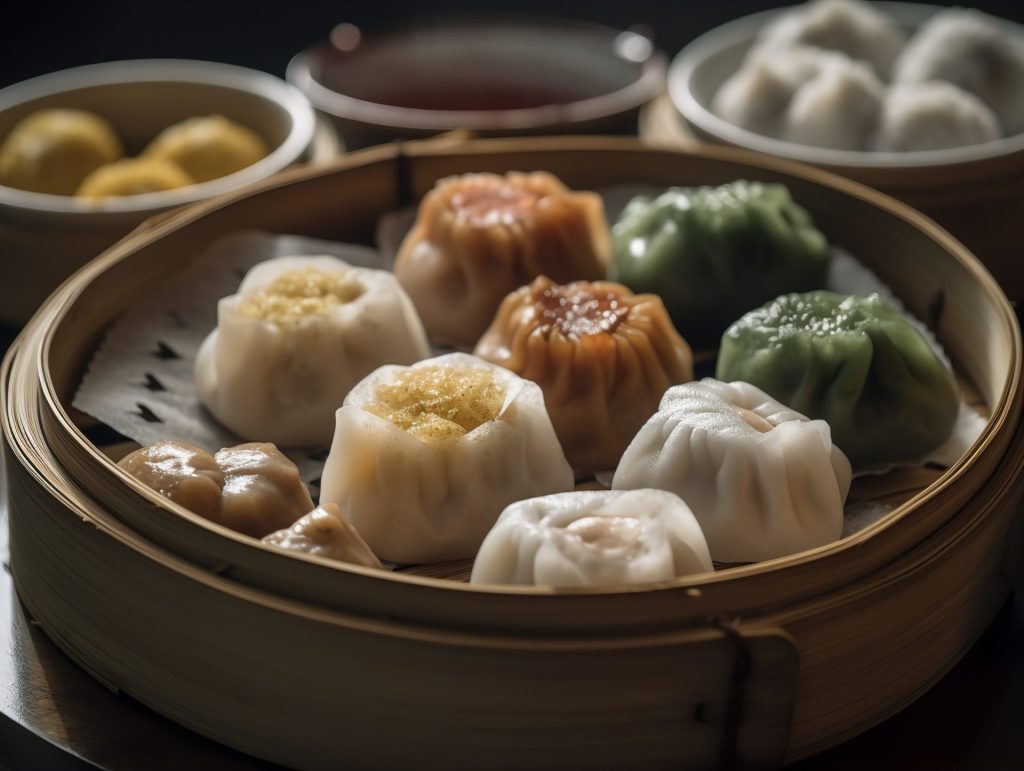
As can be seen in this picture, the line between shaomai and xiaolongbao (small dragon pocket) is blurred. Shaomai, which can originally be translated as “sold as a sideline,” comes with dumplings that are open at the top. Xiaolongbao, on the other hand, are closed. The filling can vary for both. Glutinous rice is often used for shaomai and white cabbage for xiaolongbao. Minced meat is almost always included in both. They are all delicious.
In the West, both are known under the generic name dim sum, i.e., small dishes that are usually enjoyed while drinking tea in Guangdong. Whether open or closed at the top – as seen in this picture, this distinction is not always clear in China, either.
Very clever, one might think: Despite the US chip sanctions prohibiting Western companies from supplying China with cutting-edge semiconductors, the leading US company for AI chips is still earning handsomely in China. The reason: Nvidia has simply created a scaled-down version of its AI chips for the Chinese market that are not subject to US sanctions. And these chips that Nvidia is offering the Chinese still seem good enough: China’s AI industry remains competitive for the time being.
But you can also see things through a different lens. Joern Petring writes in his analysis that as long as Nvidia apparently covers the required demand, Huawei and other Chinese chip companies will find it difficult to catch up technologically.
Donald Trump’s increasingly likely US presidency is apparently causing very little concern in China. A veritable fan cult had already formed in the country before the assassination attempt on Trump, despite his open intention to impose even stricter tariffs on Chinese goods. In his piece, Fabian Peltsch describes the love-hate relationship that many in China apparently also have with the erratic populist. Strange new world!


Despite strict restrictions from Washington, US chip manufacturer Nvidia can also expect billions in sales in China this year. The Financial Times reports, citing analyst estimates, that the company is likely to earn around twelve billion US dollars in China with its H20 AI chip alone, which was specially developed for the Chinese market.
According to the report, the world’s most valuable chip company is expected to deliver around one million H20 chips to Chinese customers in the coming months. That would be almost twice as many as Nvidia’s largest Chinese competitor Huawei managed to sell with its most advanced AI chip, the Ascend 910B.
The forecast shows how difficult it still is for Chinese companies to catch up with industry leader Nvidia when it comes to AI chips. After all, the H20 is by no means the American company’s top model, but a significantly scaled-down AI chip. Nvidia developed it specifically so that it would not violate the sanctions imposed by the White House and could be sold in China. Despite the restrictions, the H20 is now selling like hotcakes there.
Since the Biden administration first introduced restrictions on the sale of Nvidia’s most powerful AI chips to China in 2022, the US company has warned that its business will suffer. Chinese cloud computing providers and AI start-ups are indeed increasingly turning to local alternatives such as Huawei. However, they do not yet seem to be able to meet domestic demand.
According to its own figures, Nvidia generated around a quarter of its turnover in China in 2021, before the US introduced export controls. This year, it will be closer to ten percent. However, the shift is also because Nvidia experienced disproportionately strong growth in the West last year.
Growth was primarily driven by large orders from US tech companies such as Microsoft, Meta and Tesla. Although the share of the China business of the company’s sales pie has fallen significantly. In absolute figures, however, business in China continues to grow strongly. Turnover in the first quarter increased by 50 percent to 2.5 billion US dollars compared to the first quarter of the previous year. Among other things, Nvidia is expanding with EV market leader BYD, including in AI.
According to analysts, the H20 chip initially raised eyebrows among Chinese buyers, mainly due to its comparatively high price of 12,000 to 13,000 US dollars per unit. Ultimately, however, the performance convinced buyers. On paper, the capabilities of the H20 are lower than those of Huawei’s most powerful chip, the 910B. But in practice, the H20 is superior.
In addition, Huawei and its manufacturing partners reportedly have problems producing the complex processors in sufficient quantities to meet demand. Most Chinese AI companies have also built their AI models and systems on Nvidia’s ecosystem and software. Analysts say switching to Huawei’s infrastructure would be time-consuming and costly.
To summarize, the market situation looks like this: Although Nvidia only offers very slimmed-down AI chips in China, they still seem to be good enough to remain competitive for now. Huawei and other chip companies still need more time to catch up. However, they undoubtedly are working hard to catch up.
Since Nvidia cannot offer its best chips in China, it is forced to fight the local competition with one hand tied behind its back. Nvidia CEO Jensen Huang is aware of this dilemma. He has already expressed concerns about the US chip sanctions on several occasions. He expects that these restrictions could have unintended consequences. China may accelerate its efforts to develop its own semiconductor industry. This could ultimately lead to increased competition for US companies. Huang believes the sanctions may make the Chinese technology sector more self-reliant and competitive.
Other Western chip bosses also share these concerns. The head of the Dutch chip manufacturer ASML has only recently called for an end to the sanctions against China. In an interview with the German business newspaper Handelsblatt, Christophe Fouquet said that China produces chips urgently needed in the West. “There is no point in stopping someone from producing something you need.” In the case of Russian gas, it was understood that alternatives had to be found first, but this was apparently not the case with chips, he said. ASML is a leading provider of the technology used to produce the world’s most advanced semiconductors.

The assassination attempt on Donald Trump dwarfed a food scandal as the topic of the hour over the weekend. Hashtags such as “Trump has been shot #特朗普遭遇枪击,” or “Trump explains bullet in right ear #特朗普称右耳被子弹击穿” quickly reached millions of clicks. Just a few hours after the incident, Chinese e-commerce platforms such as Taobao were selling T-shirts featuring the fist-raising ex-president. On the one hand, this speaks for the business acumen of Chinese online retailers. On the other hand, it is a sign of how much Trump is also stylized as an icon in China – for better or for worse.
Trump polarizes. And he inspires the Chinese to become political like no other. After the attack, people on Weibo quickly began to discuss what effect the images would have on the US elections, which are also crucial for China. They compared the incidents with the assassinations of John F. Kennedy and Shinzo Abe. Would Joe Biden have ducked away just as quickly? Another topic was the lax US gun laws, which also causes disbelief in China. Some even saw a civil war brewing in the USA.
US conspiracy theories were also discussed. For example, the New York Post initially reported that the shooter was a “Chinese man.” An attempt to instrumentalize the event? Overall, it was once again evident how open, informed and enthusiastic discussions about politics are in China when it is not about the country’s own leaders.
Many Chinese have come to see Trump as a symbol of what is wrong with the “Western democratic system” and the chaos that can result – a narrative often echoed by the state media. A popular example of this is the storming of the Capitol in January 2021 provoked by Trump, which the People’s Daily subsequently featured in a detailed article on the “crisis of capitalist societies.” They claimed that, unlike China’s socialist system, the USA is in decline and Trump was one of many symptoms of this; the gravedigger of an empire that is already in its final stages.
In the same breath, Trump is also called China’s helper. His nickname in China is “Comrade Jianguo 建国同志” or Chuān Jiànguó, 川建国, which means “State Builder Trump.” In this context, however, this does not mean that Trump is making America great again with his political style, but that he is primarily helping to consolidate China’s status as a world power. Perhaps because they themselves are used to propaganda of the simple variety, many Chinese have instinctively understood that Trump is all about headlines and show. Moreover, his threats to China during his time in office were not as devastating and stringent as he had proclaimed to his own voters at home.
Trump’s posturing as a strongman with vast wealth has also resonated quite positively in China. His pithy disdain for political correctness and the so-called “baizuo,” as the “Western-woke left” is disparagingly referred to in China, is celebrated by many. And his nationalist rhetoric – despite being primarily aimed at China – is also met with approval. It is similar to that of Xi and other authoritarian leaders. While China’s head of state has dedicated himself to rejuvenating the Chinese nation, Trump wants to restore the USA to its former glory.
It is the politics of grand gestures, something the Chinese, calibrated by the party, are traditionally more receptive to than slogans of freedom, equality and participation. Trump’s pathos may even remind some Chinese of Mao, who cultivated a similarly erratic strongman style and staged himself as equally infallible.
Perhaps the secret admiration for Trump and his promise to “Make America Great Again” also resonates with an old longing for the land of opportunity. Many Chinese, especially those born since the beginning of the opening-up policy in the 1980s, have seen the USA as their never-ending emigration destination for many years. However, for younger Chinese, the millennials and Gen Z, Trump is also simply a meme character – both belittled and revered, as is often the case with memes. In the tributes to the late head of state Jiang Zemin, a similar semi-ironic cult of personality could be observed among millennials.
There have been plenty of Trump T-shirts on China’s e-commerce sites even before the assassination attempt. Popular designs show his likeness in combination with pithy slogans such as “We are taking America back.” The attempt on Trump’s life has now fuelled this even more. Just a few hours later, the meme engine was running hot in China. One collage, for example, showed Trump as a communist hero, his fist raised to the sickle flag with the caption: 全世界无产者联合起来! – Workers of the world unite!


Sinolytics is a research-based business consultancy entirely focused on China. It advises European companies on their strategic orientation and specific business activities in the People’s Republic.
China’s state-owned rare earth companies are increasingly in the negative as prices fall. As the Japanese newspaper Nikkei Asia reported on Tuesday, the Shanghai-listed rare earth company “Rising Nonferrous Metals” from Guangzhou had to admit that it expected a net loss of between 271 million yuan and 311 million yuan (37.33 million to 42.84 million US dollars) in the first half of the year. The group cited a “drastic drop in the sales prices of its most important rare earth products,” namely dysprosium, terbium and didymium, a mixture of neodymium and praseodymium, as the reason. In the same period last year, the company made a net profit of 102 million yuan.
China Northern Rare Earth (Group) High-Tech, the country’s largest rare earth group by volume, barely turned a profit in the first half of the year: According to Nikkei, the company’s net profit is expected to range between a modest 37 and 54 million yuan, a 95 to 97 percent year-on-year decline. The mining company Xiamen Tungsten, which belongs to the Fujian provincial government, also announced that its revenue from the rare earths business fell by 22 percent in the first half of the year.
Nikkei reports that the government is currently strengthening its access to resources and the rare earth supply chain as a strategic industry. China holds the world’s largest reserves of the 17 rare earth elements, which are essential for a wide range of technical products – from smartphones to electric vehicles and wind turbines to missile defense systems. ck
Huawei appears to be on the verge of completing a chip R&D center in Shanghai. Citing the website of the Shanghai district of Qingpu in the west of the city, Bloomberg reported on Tuesday that it will be the company’s largest research center in the world with around 30,000 employees. The site in Qingpu is 1.6 million square meters in size and already has its own road network, a small railroad network and elevated bridges. According to the website, the total investment costs amount to ten billion yuan (1.4 billion US dollars).
In the face of US tech sanctions, China has stepped up its own development efforts to avoid falling behind. According to Bloomberg, the new plant is part of these efforts and is intended to generate breakthroughs in semiconductors for devices, wireless networks and the Internet of Things. Huawei has been the target of US sanctions and export controls for years. ck
The sharp downturn in the important Chinese market slowed down the luxury products company Richemont in the spring quarter. Sales of the manufacturer of Cartier rings and chains, as well as IWC and A. Lange & Soehne watches, rose by one percent in local currencies to 5.27 billion euros, as Richemont announced on Tuesday. The slowdown that had already become apparent last year thus continued. In Greater China, sales fell by 27 percent from April to June. China’s economy has been struggling with declining momentum for some time due to the ongoing downturn in the real estate market and the uncertain situation in the job market.
However, the Geneva-based company fared better than other industry players thanks to a resilient jewelry business. With Cartier, Van Cleef & Arpels and Buccellati, Richemont is the global market leader in branded jewelry. Thanks to its focus on the top segment with the most price-insensitive customers, Richemont is better positioned to withstand economic headwinds than many of its competitors, explained Reto Loetscher, analyst at Luzerner Kantonalbank. His colleague Patrik Schwendimann from Zurich Cantonal Bank pointed out that branded jewelry is gaining market share thanks to the younger generation. While Richemont’s jewelry business grew by four percent in the quarter, sales of watches shrank by 13 percent.
Earlier this week, the world’s largest luxury watch manufacturer Swatch reported a 10.7 percent drop in sales for the first half of the year. Fashion companies are also feeling the effects of the consumer slump in China. The men’s and women’s outfitter Hugo Boss posted a profit decline in the second quarter and canceled its annual targets. rtr
China continues to experience heavy rainfall. The deadly rains that devastated the south moved north and hit the previously drought-stricken central province of Henan and the northern province of Hubei. On Sunday, four people were killed in the city of Suizhou in Hubei when their car was washed into a river by the floods. Large parts of the grain province of Henan, which had been hit by a drought between April and June, were flooded by an “extremely heavy downpour” on Tuesday, the South China Morning Post reported. Beijing has put 15 provinces on high alert. The risk of severe flooding is increasing.
The country is entering the peak annual rainfall season. The authorities had recently put the Three Gorges Dam downstream on high alert in view of devastating rainfall in the south-western Chinese Yangtze metropolis of Chongqing, which claimed several lives. According to the Ministry of Water Resources, the reservoir’s water level behind the dam had already risen to a height of 161 meters by the end of last week, higher than ever before in July.
Water has already been deliberately released from the reservoir through nine floodgates in the Three Gorges Dam to create more capacity for incoming floodwater from the upper reaches. Fears of the huge dam bursting have accompanied the project since its planning. It is already the second flood on the Yangtze this year. ck

A few years ago, the focus was primarily on opportunities when German companies came to China. When Achim Haug earned his degree in East Asian Regional Studies at the University of Cologne in 2009, there was a kind of opening-up euphoria. Everyone wanted to go to China, the economy seemed to be on the rise – and society also seemed to be getting more liberal and open.
This was the country that Achim Haug experienced during his year abroad in Chengdu and on backpacking trips. The decision to study in China was more of a coincidence – Achim Haug was particularly drawn to the diversity of the study program. In addition to Chinese, Chinese history and culture and Chinese legal culture, the curriculum also included economics and law. Besides culture and history, China’s economic model particularly fascinated Achim Haug: An alternative concept to the Western market economy, repeatedly declared dead, but somehow still successful. The job at Germany Trade and Invest (GTAI), which he discovered and took up directly after graduation, perfectly matched this interest.
Achim Haug is now Head of East Asia at GTAI and is responsible for Japan, Korea, Taiwan and Mongolia in addition to China. In this position, he is a kind of pathfinder for small and medium-sized enterprises. As one of three pillars of foreign trade promotion, GTAI provides initial information on foreign markets in the form of advice, analyses, magazine articles, podcasts and lectures. How is the local economy developing? What opportunities and challenges can a company expect when entering the market in its respective sector, for example in the automotive industry or mechanical engineering? What legal, customs or negotiation aspects must be considered? Once these questions have been clarified, the next step is for companies to contact the chambers of foreign trade.
GTAI sends experts as correspondents to the respective countries to gather data for analyses and studies. They network with local companies, conduct interviews and attend events and trade exhibitions. Achim Haug was stationed in Hong Kong for five and a half years from 2012. From there, he frequently traveled through China, often several times a week, but also to other countries in the region.
He now works in Bonn and his day-to-day work involves less travel and more desk work. The topics have also changed considerably since he took up his position 15 years ago, Achim Haug says. In addition to economic and sector analyses, geopolitics and critical dependencies now play a large role. In addition to opportunities, business with China is now always about the risks that foreign business in the People’s Republic can entail.
Yet the momentum in Asia remains unbroken. For companies with business in China, de-risking therefore often means producing in China for China, but by no means withdrawing investments. Many prefer to focus on China+1: the second pillar serves diversification and is often placed in neighboring Asian countries. But where are the best locational conditions for which company?
It’s all about the best production sites, supply chains and sales markets. The need for information on Southeast Asia is currently huge, says Achim Haug. That is why GTAI has opened a new hub in Singapore, from which information on Southeast Asia will be bundled in order to better support companies in diversifying in Asia.
China has changed and is changing the world. It has turned into a different country than the one Achim Haug experienced during his university years. We don’t want to de-couple ourselves, so we have to deal with China, he says. He sees his own task all the more as being a pathfinder. By providing excellent advice, Achim Haug wants to lay a solid foundation for entrepreneurial decisions that, despite all the risks, will help to continue seizing opportunities.
Jun Tang is the new Brand Partnership Manager China at the Hamburg-based creative agency getitdone GmbH. Tang has already worked as Branding and Marketing Director in Shanghai.
Yixiang Huang has been Deputy Head of Administration, Admin & HR Department at China Construction Bank in Frankfurt since June. Huang studied German language and literature at Tongji University and came to Germany via the University of Jena. He has been working for the German branch of the Chinese bank for more than eight years.
Is something changing in your organization? Let us know at heads@table.media!

As can be seen in this picture, the line between shaomai and xiaolongbao (small dragon pocket) is blurred. Shaomai, which can originally be translated as “sold as a sideline,” comes with dumplings that are open at the top. Xiaolongbao, on the other hand, are closed. The filling can vary for both. Glutinous rice is often used for shaomai and white cabbage for xiaolongbao. Minced meat is almost always included in both. They are all delicious.
In the West, both are known under the generic name dim sum, i.e., small dishes that are usually enjoyed while drinking tea in Guangdong. Whether open or closed at the top – as seen in this picture, this distinction is not always clear in China, either.
